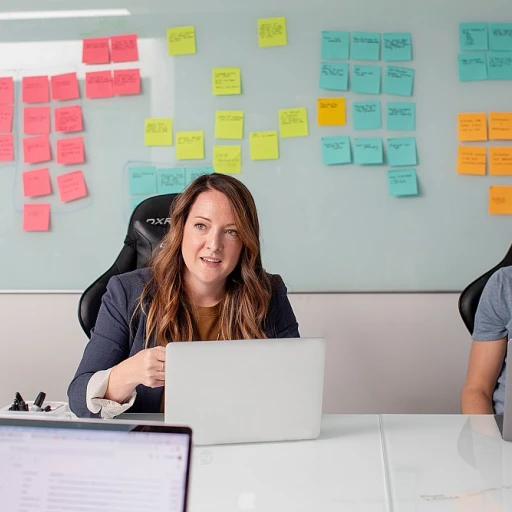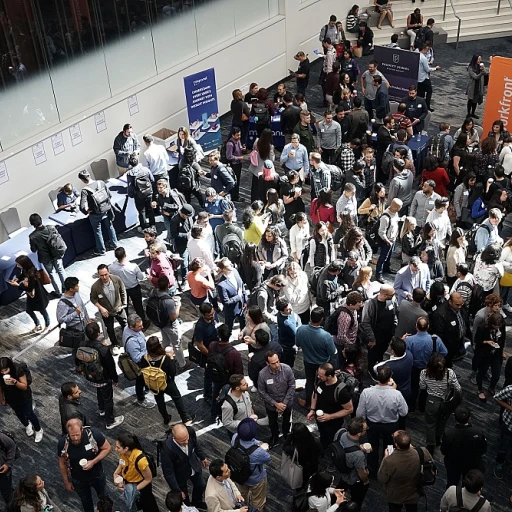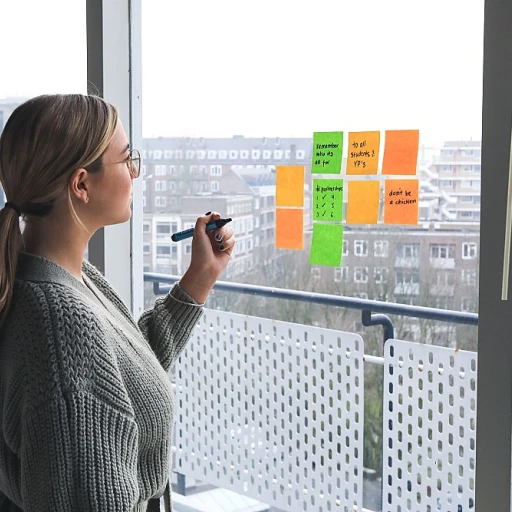
The Role of Adaptability in Human Resources
Embracing Adaptability for Effective Human Resource Management
In today's rapidly evolving business landscape, adaptability has emerged as a critical trait in addressing the skills gap within organizations. The ability of human resource managers to adjust strategies and practices in response to external changes is essential for maintaining a competitive advantage. As markets and technologies evolve, organizations must ensure their human resources can swiftly transition to new demands. This adaptability allows HR managers to effectively manage employee performance and meet organizational needs.
Adaptability in HR often involves enhancing communication skills and employee engagement. Effective communication is crucial for fostering clear understanding among employees about their roles and expectations. Additionally, by promoting open dialogue and transparency, resource managers can ensure that their teams are aligned with the organization’s objectives, leading to improved performance.
Moreover, human resources professionals play a vital role in tailoring training development programs that support adaptability. They must continuously update these programs to reflect emerging trends and technologies in resource management. This proactive approach empowers employees to develop new skills and remain relevant in their job roles. Understanding preference assessments can also provide valuable insights into tailoring these initiatives effectively.
Ultimately, the encouragement of adaptability within human resource management not only addresses the skills gap but also positions the organization to thrive amid uncertainty. By fostering an adaptable work environment, businesses can ensure their workforce is capable of evolving alongside industry demands, thus supporting long-term sustainable growth.
Strategic Workforce Planning
Crafting a Blueprint for Human Resources Management
In a fiercely competitive landscape, the ability to strategically plan an organization’s workforce is essential. Effective resource management hinges on the foresight of HR managers to anticipate future skill requirements. With the evolving work environment, managers need to align human resources strategies with the overall business objectives.
Strategic workforce planning serves as a roadmap for organizations to navigate the complex terrain of skills development. It requires a keen understanding of the current labor statistics, job market trends, and employee performance metrics. HR managers can leverage this data to create informed plans that address skills gaps and enhance organizational efficiency.
Organizations should focus on the following aspects:
- Resource Analysis: Evaluate the current workforce capabilities and future needs. Resources managers must meticulously assess the existing job roles and anticipate emerging occupational demands.
- Scenario Planning: Develop scenarios based on potential future changes in the business environment. This helps in crafting strategies that are adaptable and resilient to unexpected shifts.
- Communication Integration: Embed strong communication skills within the team for accurate information dissemination. This ensures all employees are aligned with the strategic vision.
- Compensation and Benefits: Design competitive compensation benefits structures that attract and retain talent. Performance management systems can be employed to incentivize employee engagement and development.
By focusing on these elements, organizations can not only mitigate skills gaps but also fortify their workforce against future challenges. To further explore this topic, consider the critical questions essential for assessing potential talent, which is crucial in supporting strategic workforce planning initiatives.
Fostering a Culture of Continuous Learning
Building a Culture of Lifelong Learning
Creating an environment where continuous learning is a part of an organization’s DNA is vital for addressing the skills gap effectively. Organizations must understand that employee development is not a one-time affair, but a lifelong journey. It is crucial for resources managers to embed learning opportunities within the work environment, making them easily accessible and relevant to both the employees’ current roles and future aspirations. This approach better positions businesses to adapt to emerging trends and technologies.
For an organization to thrive, human resource teams should promote a culture that values and encourages ongoing skills development. This involves aligning training development initiatives with strategic workforce plans and employment needs. By doing so, management can ensure that employees are equipped to meet occupational requirements effectively.
Furthermore, HRM professionals should offer a blend of formal training programs and informal learning channels. These might include mentorship, coaching, and access to e-learning platforms. They should tailor these options to address individual employees' skills profiles, leveraging technology to enhance learning experiences. Moreover, fostering employee engagement through active communication helps integrate learning into everyday work life, making it a seamless process rather than an additional burden.
Insights from the enhancing procurement skills blog highlight the importance of conducting comprehensive capability assessments. Such evaluations allow organizations to pinpoint skills gaps accurately and strategically plan developmental paths that align with both organizational goals and personal career growth of employees.
By nurturing a culture of continuous learning, resources managers strengthen an organization's adaptive capabilities while enhancing employee performance and job satisfaction, ultimately contributing to business success. It’s a symbiotic relationship where both the company and its employees grow together, thereby narrowing the skills gap effectively.
Leveraging Technology for Skills Development
The Impact of Technology on Skills Enhancement
In the ever-evolving landscape of human resource management, leveraging technology has become an essential strategy for addressing the skills gap. Technology not only streamlines HR processes but also plays a pivotal role in enhancing employee skills and boosting organizational performance. By integrating technology, organizations can better facilitate training development and improve overall employee engagement.
Firstly, embracing digital learning platforms can transform traditional training methods. Online learning systems offer employees the flexibility to acquire new skills at their own pace, aligning with individual learning styles and work schedules. This personalized approach to learning development enhances employee value and adapts to the employees' available time, ensuring that they remain engaged and motivated.
Moreover, organizations can utilize data analytics to target specific skill areas that require improvement. By analyzing metrics from platforms such as learning management systems, HR managers can identify trends, customize training programs, and optimize resource planning. This strategic decision-making process enables a more efficient allocation of resources and compensation benefits, fostering an environment of continuous improvement and development.
Additionally, collaboration tools such as video conferencing and virtual workshops offer a dynamic channel for communication skills enhancement. These tools not only facilitate interaction among team members but also bridge the gap between geographically dispersed teams, fostering a more cohesive work environment. Resources managers can use these technologies to promote diversity in thought and develop cross-functional teams that drive innovation within the organization.
Finally, the advancement of artificial intelligence and machine learning has opened new frontiers for skills augmentation. By incorporating AI, organizations can automate repetitive tasks, allowing employees to focus on complex problem-solving and innovative projects. This shift towards high-value tasks fosters a culture of growth, encouraging workers to upskill and remain competitive in the evolving job market.
In summary, technology serves as a cornerstone for human resources in bridging the skills gap. By adapting to digital advancements, organizations can enhance the performance management of their workforce, support employee relations, and ultimately drive business development and success.
Collaboration with Educational Institutions
Building Bridges with Educational Institutions
As organizations continue to face challenges in bridging the skills gap, forming strategic alliances with educational institutions can prove invaluable. Human resources managers, development managers, and business leaders can foster these collaborations to ensure a consistent supply of skilled workers, tailored education, and aligned occupational training that meets industry demands.
These partnerships enable HRM departments and resource management teams to influence curriculum development, ensuring that the education provided is relevant to current and future job market requirements. This co-creation of educational programs not only benefits students but ensures that organizations receive candidates who are better prepared for employment.
Furthermore, engaging directly with universities and vocational institutions offers the opportunity for human resources departments to implement internships, apprenticeships, and co-op programs that enrich employees' educational experiences and provide hands-on skills development. This approach enhances both the work environment and employee engagement by aligning academic learning with on-the-job applications.
- Communication Skills Exchange: By collaborating with educational entities, HR leaders can exchange insights on modern communication skills that are crucial in the workplace, ensuring that new hires have these competencies from the onset.
- Resource Planning and Performance Liaison: These partnerships also assist with organizational resource planning and performance management by predicting trends and filling resource gaps effectively before they become critical.
In summary, as human resource managers strive to close the skills gap, building and maintaining strong relationships with educational partners is essential. These collaborations help streamline resource allocation, enhance employee relations, and facilitate sustainable skills development, setting the stage for long-term organizational success and worker satisfaction.












